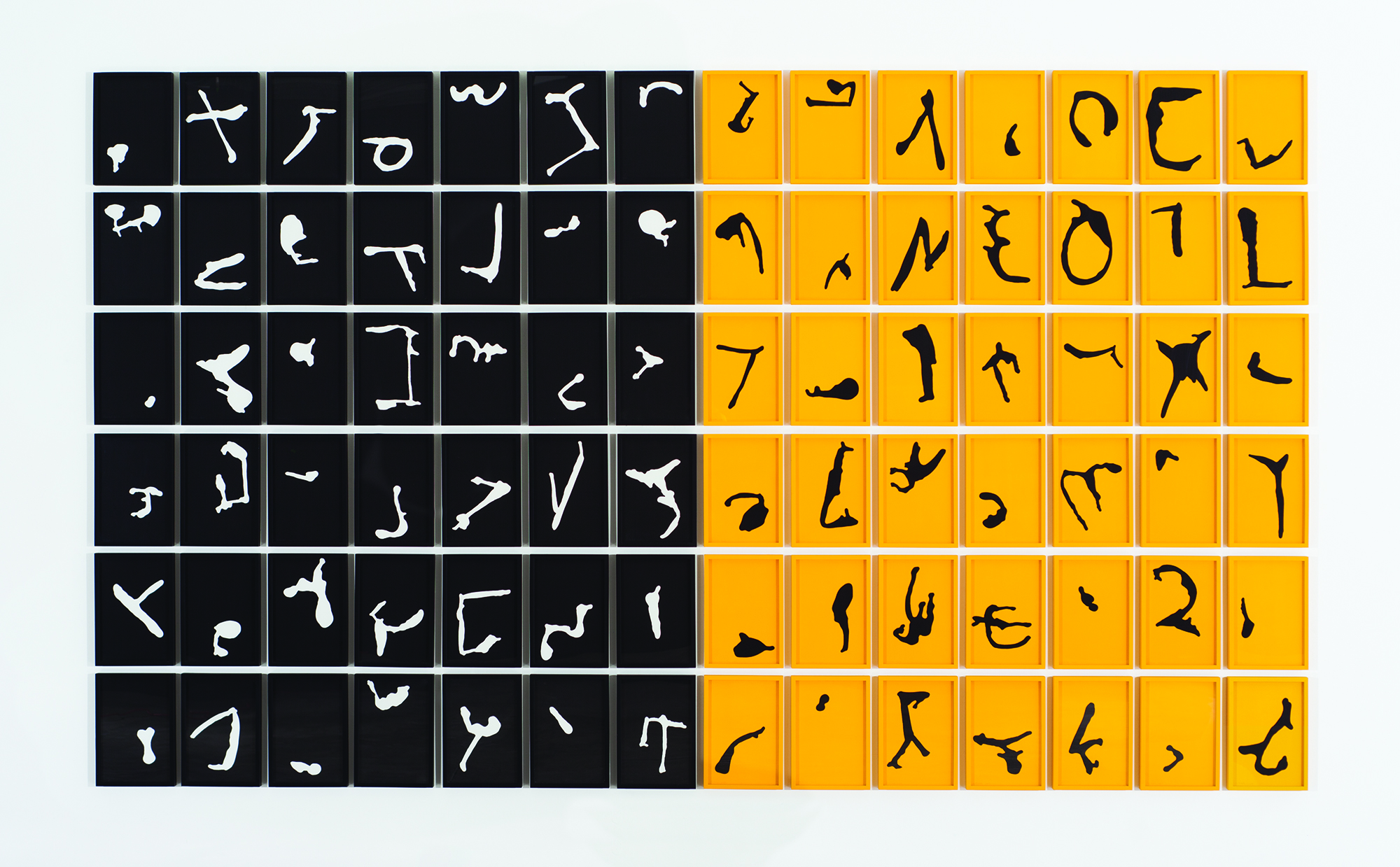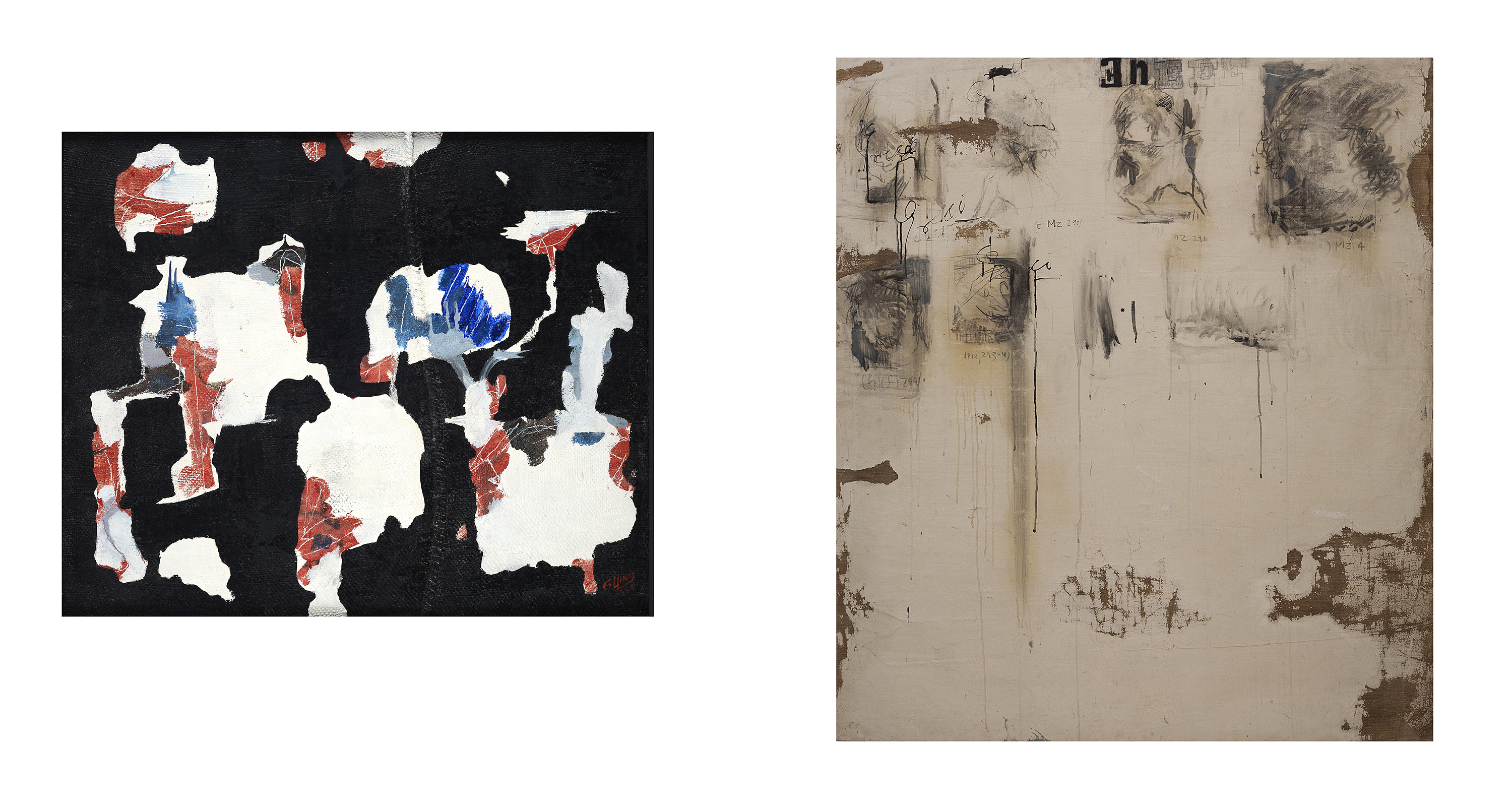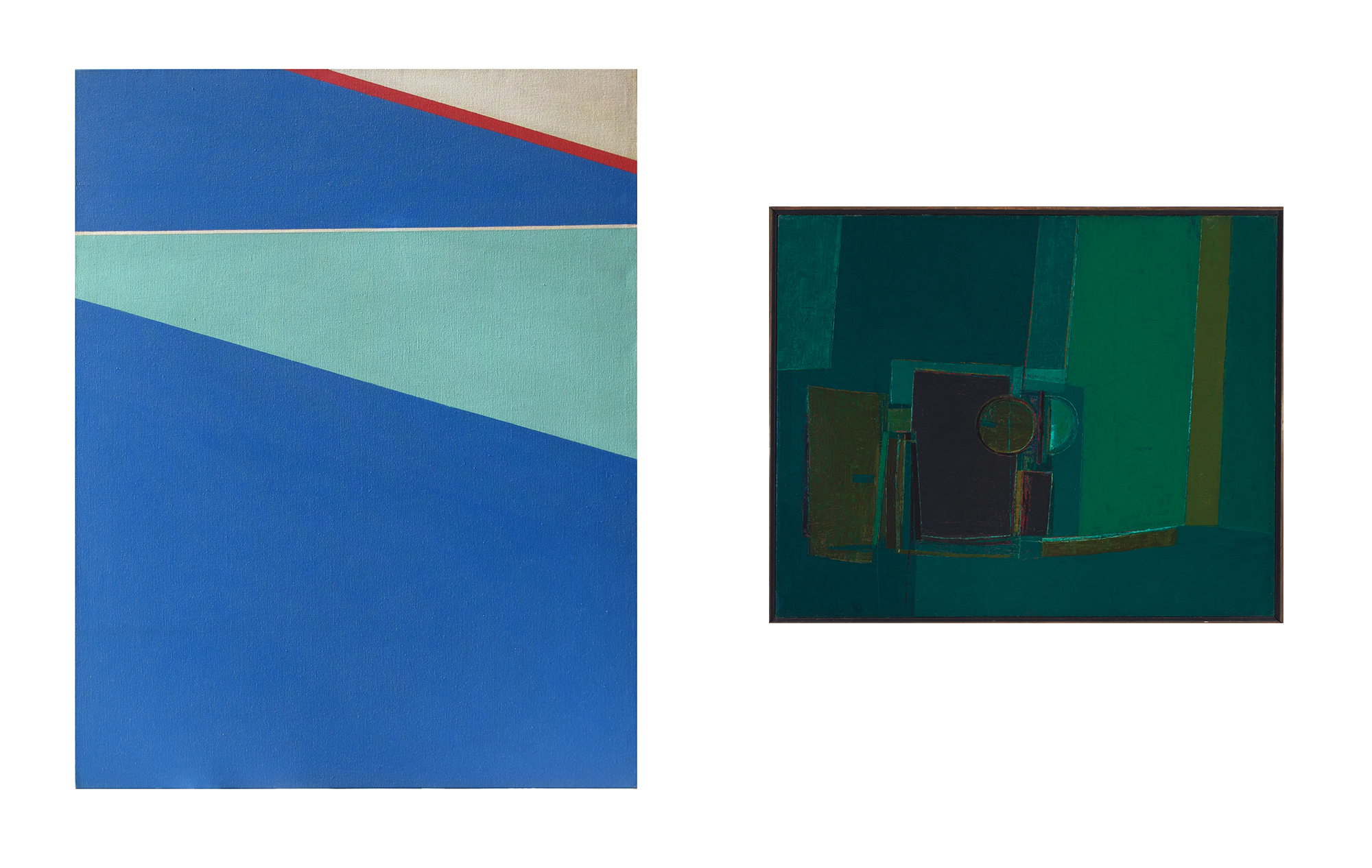
Impulse, Reason, Sense, Conflict
Image: Horsemen Global V#2, 2006, Miguel Amat
LATIN AMERICAN ABSTRACT ART
from the Ella Fontanals-Cisneros Collection
Showing October 5 - December 15, 2023
GUEST LECTURE | December 5th, 3:30 - 4:30 pm
Dr. Monica Amor presents, "An Artisanal Attitude: Modernity's Entanglements", read more.
GUEST LECTURE | November 28th, 12:30 - 1:30 pm
Abstract Art, Real Contexts: 20th-century Latin American Politics and Art
Richard Gioioso, Ph.D. and Emily Hage, Ph.D. will speak about art and responses to migration and politics in Latin America in the mid-20th century

The Frances M. Maguire Art Museum at Saint Joseph’s University has been offered an incredible opportunity to host an exhibition of works from the widely esteemed Ella Fontanals-Cisneros Collection for the first time in Philadelphia. This show, “Impulse, Reason, Sense, Conflict: Latin American Abstract Art from the Ella Fontanals-Cisneros Collection,” will present a diverse selection of abstract sculpture, painting, photography, video, and mixed media from the 20th and 21st centuries.
The works are by 20th- and 21st-century Latin American artists, some of whom have spent part of their career in the United States. The show includes such leading artists as Hélio Oiticia, Francis Alÿs, Gabriel Orozco, Felipe Dulzaides, Jesús Soto, and Lygia Clark. The exhibition, which will fill three large galleries (1,960 square feet), engages with political, social and cultural discussions, challenging the widely held notion that abstract art is disconnected from the outside world.
Image: Esmeralda, 1960, Sarah Grilo
About Impulse, Reason, Sense, Conflict
Impulse, Reason, Sense, Conflict: Latin American Abstract Art from the Ella Fontanals-Cisneros Collection explores the pervasiveness of abstraction and the artistic developments that have shaped it in the 20th and 21st c. All of the works on display are by artists in, of, or from Latin America from 1950 to 2014 and belong to the outstanding Ella Fontanals-Cisneros Collection. The exhibition was organized in collaboration with the Cisneros Fontanals Art Foundation (CIFO), dedicated to the preservation and promotion of Latin American art.
Since its emergence in the early 20th c., abstract, non-representational art has shifted from a goal of modern art to an aesthetic category. Abstraction has inspired a variety of artistic practices, and it has radically transformed the distribution and reception of art. This was particularly true for Latin American artists, many of whom delved into the possibilities of abstraction as they sought their own way of understanding the European modern avant-gardes. Examples include Joaquín Torres-García’s Escuela del Sur in 1930s Uruguay, the Argentine dialectic materialist artists of the 1940s, and the neo-concrete and kinetic art movements in Brazil and Venezuela of the 1950s and 1960s..
This exhibition is divided into four sections: Abstract Impulses, Laboratory of Reason, Uncommon Senses and Spatial Conflicts. Abstract Impulses unpacks the tensions between abstraction and figuration. Laboratory of Reason examines how artists reflect on abstraction to question the nature and essence of art in relation to scientific and technological advances. Uncommon Senses delves into the perceptual types that abstraction introduced, with a specific focus on how its practitioners reach beyond the purely visual by incorporating other senses into the work. Spatial Conflicts refers to how abstraction fundamentally altered the conception of space and time in art, shifting away from traditional perspective to embrace the infinity of flatness.
It is worth noting that this approach to abstraction aligns with the pioneering vision of collector Ella Fontanals Cisneros, allowing for and promoting distinctive curatorial interpretations. By providing a set of curatorial readings of abstraction that center on the artists’ practices as well as the experience of the works, we invite viewers to contribute their own viewpoints and critical reflection to enrich this exploration.
- Jesús Fuenmayor, Guest Curator
Impulse, Reason, Sense, Conflict
-
This section is dedicated to the nearly century-long crisis in figurative representation since the emergence of abstract art in the early 1900s. In these works we examine the tensions generated by the replacement of the represented object with painting’s morphological components (color, line, plane, etc.) and how that tension provokes the compulsion to continue to see represented objects where there are none. It is also an allusion to the more recent impulse to understand abstraction as another form of representation.
Artists: Miguel Amat, Emilia Azcarate, Carla Chaim, Sandu Darie, Willys De Castro, Felipe Dulzaides, Magdalena Fernández, Mario García Torres, Anna Maria Maiolino, Sameer Makarius, Gilda Mantilla y Raimond Chaves, Gego, Helio Oiticica, Jorge Ortiz, Claudio Perna, Liliana Porter, Dolores -Loló- Soldevilla, Adrián Villar Rojas.

Anna Maria Maiolino
b. 1942, Italy; lives and works in Brazil
84 desenhos (Novas marcas de gota)
2003
Acrylic on cardboard
16.13” x 22.13” each -
In this section, we address a second model for artistic production inaugurated by abstraction. Instead of seeking certain aesthetic ends—as classical and traditional art had—creators aligned with abstraction criticized underlying assumptions about the essence and existence of art. At the same time, abstraction merged with rationalization. Russian Constructivist artists in the early 20th c., for instance, engaged abstraction at the service of social needs and government propaganda. At the other extreme were spiritually- and theosophically-motivated pioneers of geometric art.
Artists: Alberto Borea, Natalia Castañeda, Lygia Clark, Eugenio Espinoza, Fernanda Gomes, Arturo Herrera, Suwon Lee, Jac Leirner, Renata Lucas, Jorge Pedro Núñez, Gabriel Orozco, Gustavo PérezMonzón, Claudio Perna, Gabriel Sierra, Adán Vallecillo

Natalia Castañeda
b. 1982, Columbia
La ilusión de flotar
2007
Three digital prints -
In this section we bring together a group of works reflecting on how abstraction has been informed by modes of experience beyond the purely visual – written or spoken verbal material produced by the artists themselves in non-traditional or non-conventional media, or different art forms such as theater, music, dance, and literature. This explains why abstraction has repeatedly demanded an approach that engages multiple senses beyond vision in both its production and reception.
Artists: Sergio Camargo, Sigfredo Chacón, Danilo Dueñas, José Gabriel Fernández, Gego, Alberto Greco , Guido Llinás, Raúl Martínez, Carlos Puche, Claudio Perna, Carlos Rojas, Francisco Salazar, Mira Schendel

Left:
Guido Llinas
b. 1923, Cuba; d. 2005, France
Contrapintura,
Oil on jute, 1955
35.82” x 30”
Right:
Alberto Greco
b. 1931, Argentina; d. 1965, Spain
Untitled
Oil on canvas, 1964
62” x 71” -
This nucleus of works points out the radical change that abstraction effected on the conception of spatiality. Specifically, as opposed to the illusory space of Renaissance perspective, abstract art proposed the flat surface of the artwork as a place of infinite possibilities, allowing for, among other things, the incorporation of seriality. Abstraction also introduced time and movement to enable a fuller and more complex experience in relation to the observed (or perceived) object.
Artists: Regina Aprijaskis, Antonio Asis, Mario Carreño, Iran do Espirito Santo, Jaime Gili, Sarah Grilo, Gunther Gerszo, Mathias Goeritz, Alfred Jensen, Alejandro Otero, Eduardo Ramírez Villamizar, Ana Sacerdote, Jesús Soto, Eduardo Terrazas, Alfred Wenemoser

Left: Regina Aprijaskis
b. 1921, France; d. 2013, Peru
Untitled
Acrylic on canvas, 1968
36.22” x 46”
Right: Sarah Grilo
b. 1919, Argentina; d. 2007, Spain
Esmeralda
Oil on canvas, 1960
32” x 25.5”
From the sixties onward, Latin American artists began to incorporate new world situations and the different possibilities of responding to them. As few of them continue to take recourse to iconographic or narrative language to define Latin America identity, each new work tends to be a challenge to the stereotypes of what is Latin American.
![Fuenmayor]() Jesús Fuenmayor, Director and Curator at Univ. of Florida, University Museum
Jesús Fuenmayor, Director and Curator at Univ. of Florida, University MuseumGuest Curator
